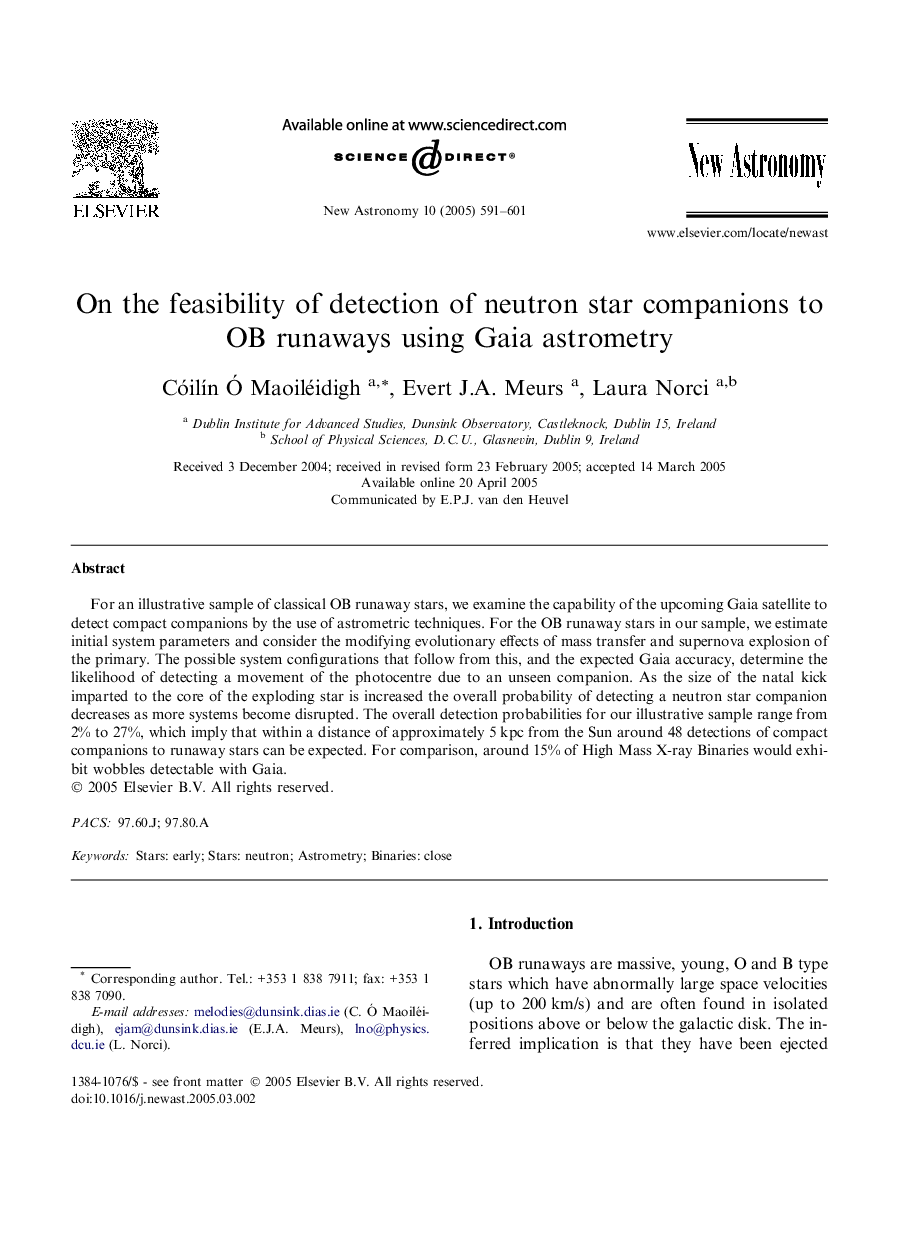| Article ID | Journal | Published Year | Pages | File Type |
|---|---|---|---|---|
| 10704912 | New Astronomy | 2005 | 11 Pages |
Abstract
For an illustrative sample of classical OB runaway stars, we examine the capability of the upcoming Gaia satellite to detect compact companions by the use of astrometric techniques. For the OB runaway stars in our sample, we estimate initial system parameters and consider the modifying evolutionary effects of mass transfer and supernova explosion of the primary. The possible system configurations that follow from this, and the expected Gaia accuracy, determine the likelihood of detecting a movement of the photocentre due to an unseen companion. As the size of the natal kick imparted to the core of the exploding star is increased the overall probability of detecting a neutron star companion decreases as more systems become disrupted. The overall detection probabilities for our illustrative sample range from 2% to 27%, which imply that within a distance of approximately 5Â kpc from the Sun around 48 detections of compact companions to runaway stars can be expected. For comparison, around 15% of High Mass X-ray Binaries would exhibit wobbles detectable with Gaia.
Related Topics
Physical Sciences and Engineering
Physics and Astronomy
Astronomy and Astrophysics
Authors
CóilÃn à Maoiléidigh, Evert J.A. Meurs, Laura Norci,
